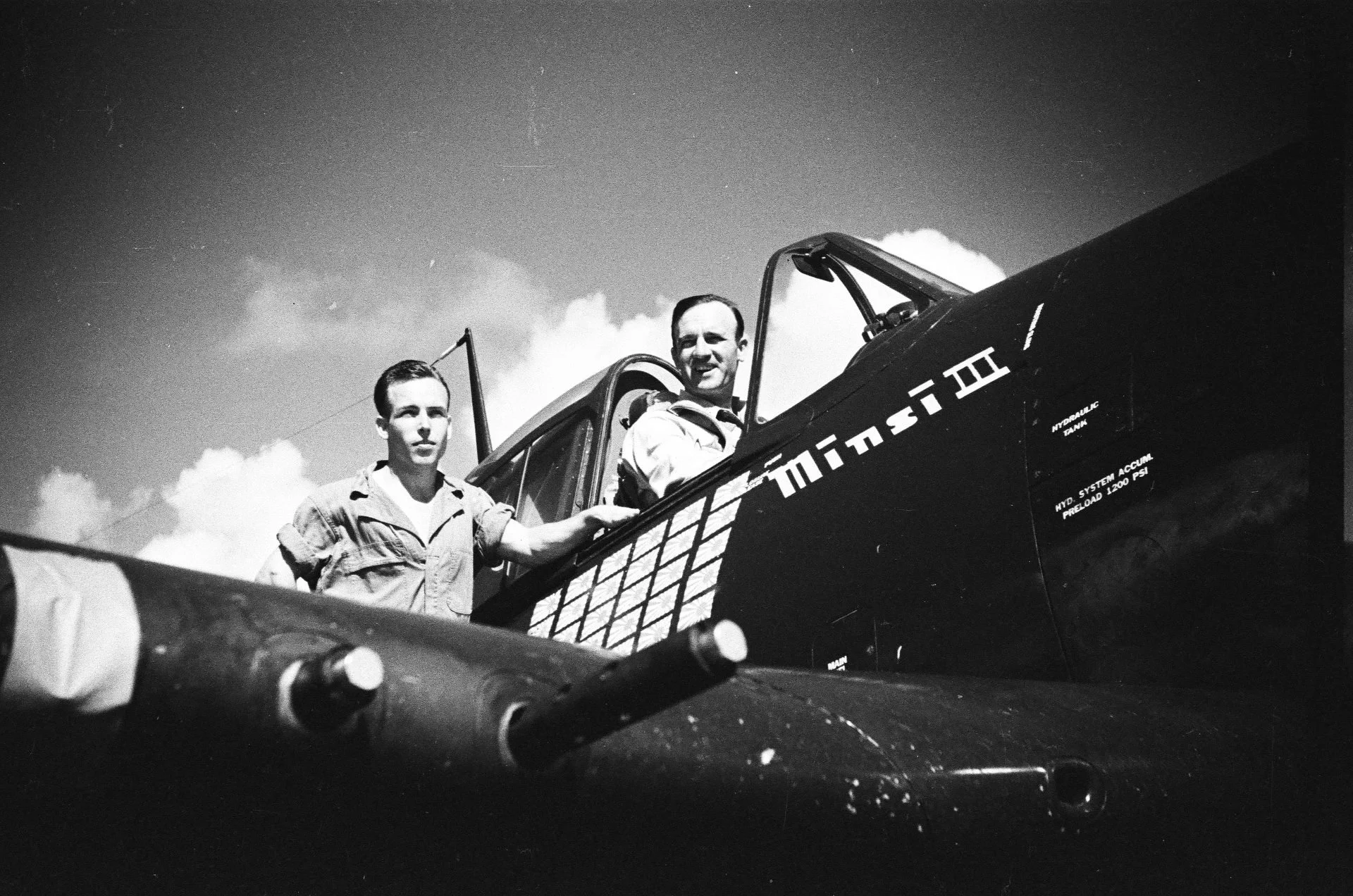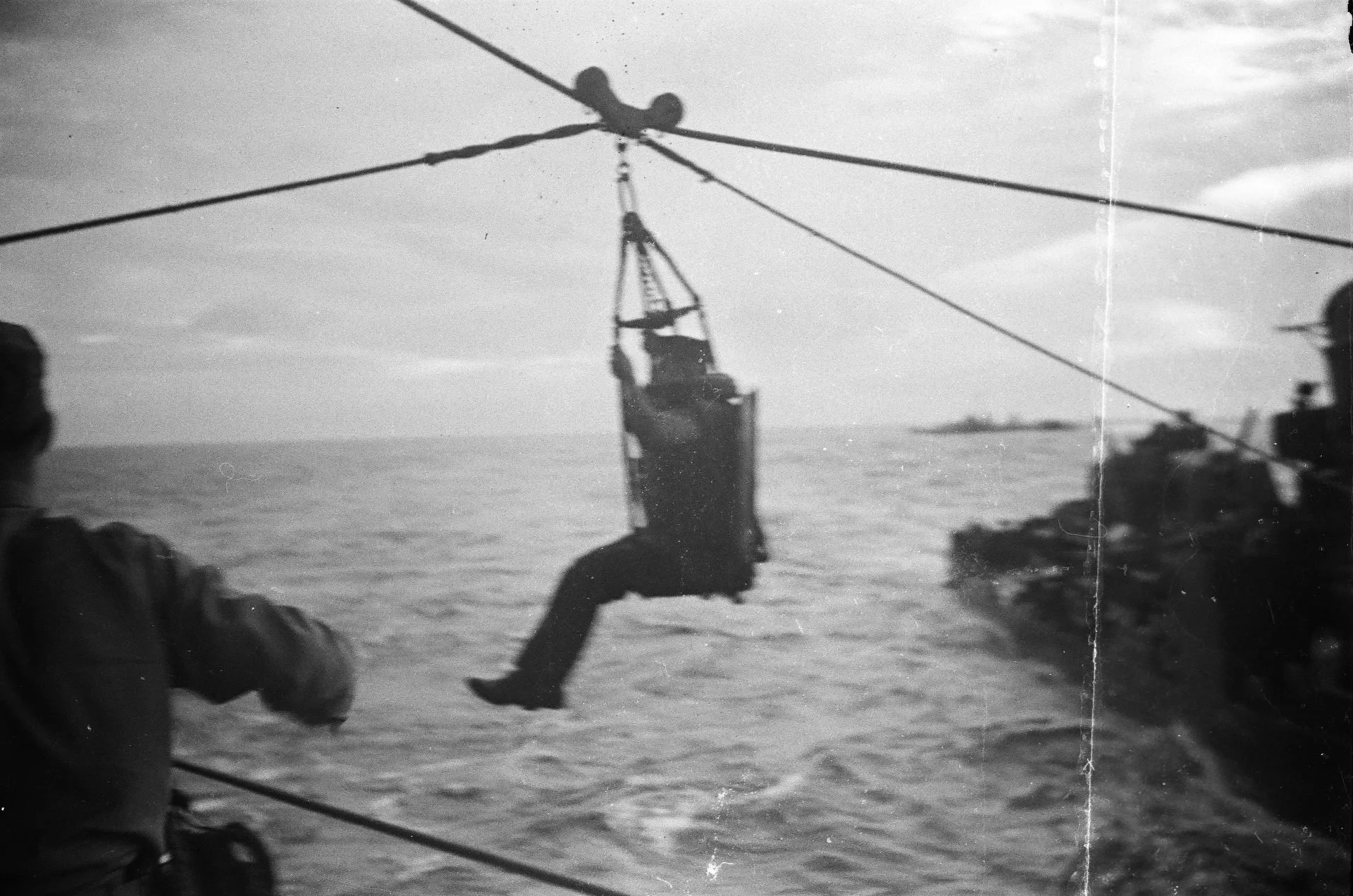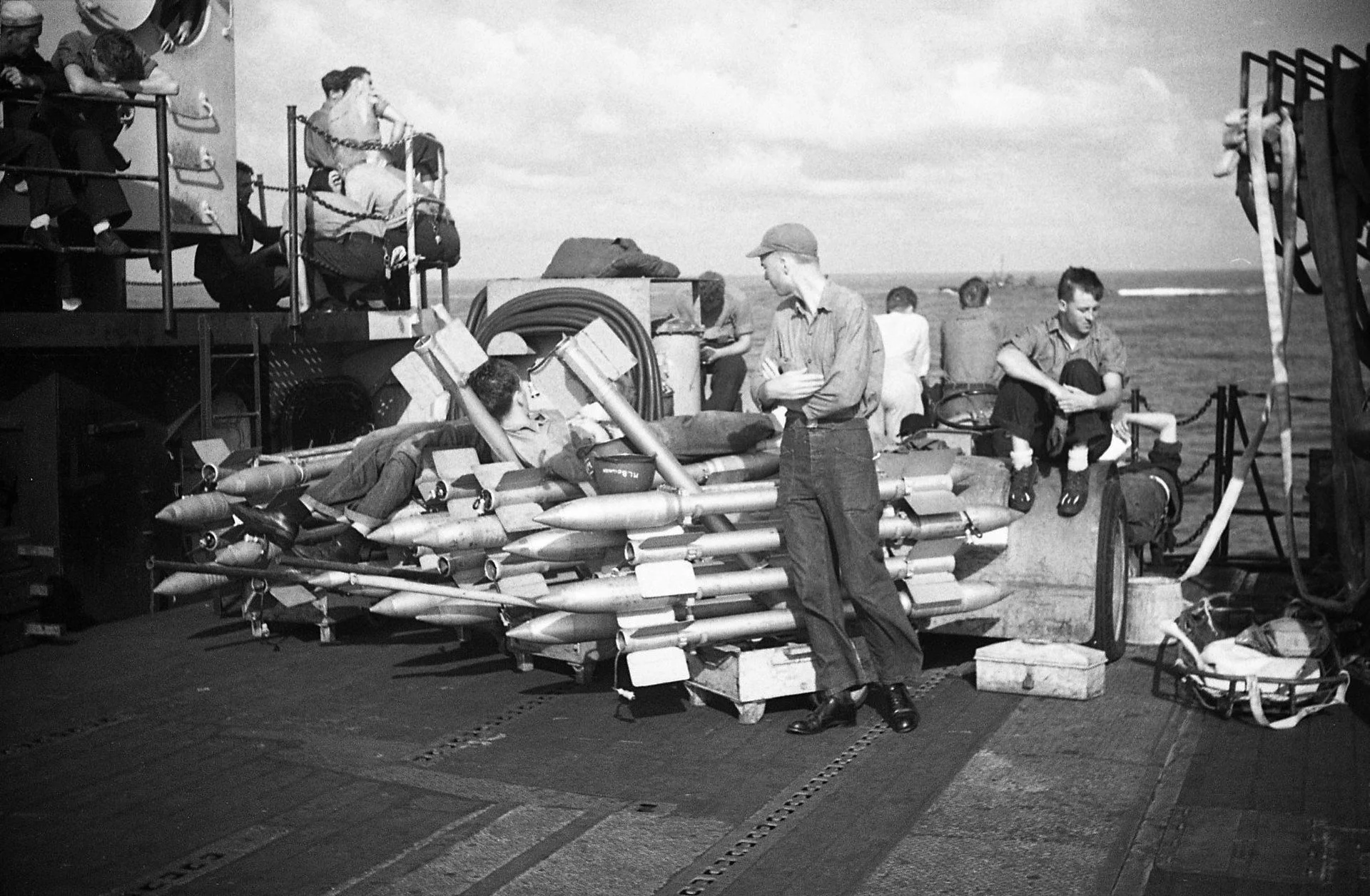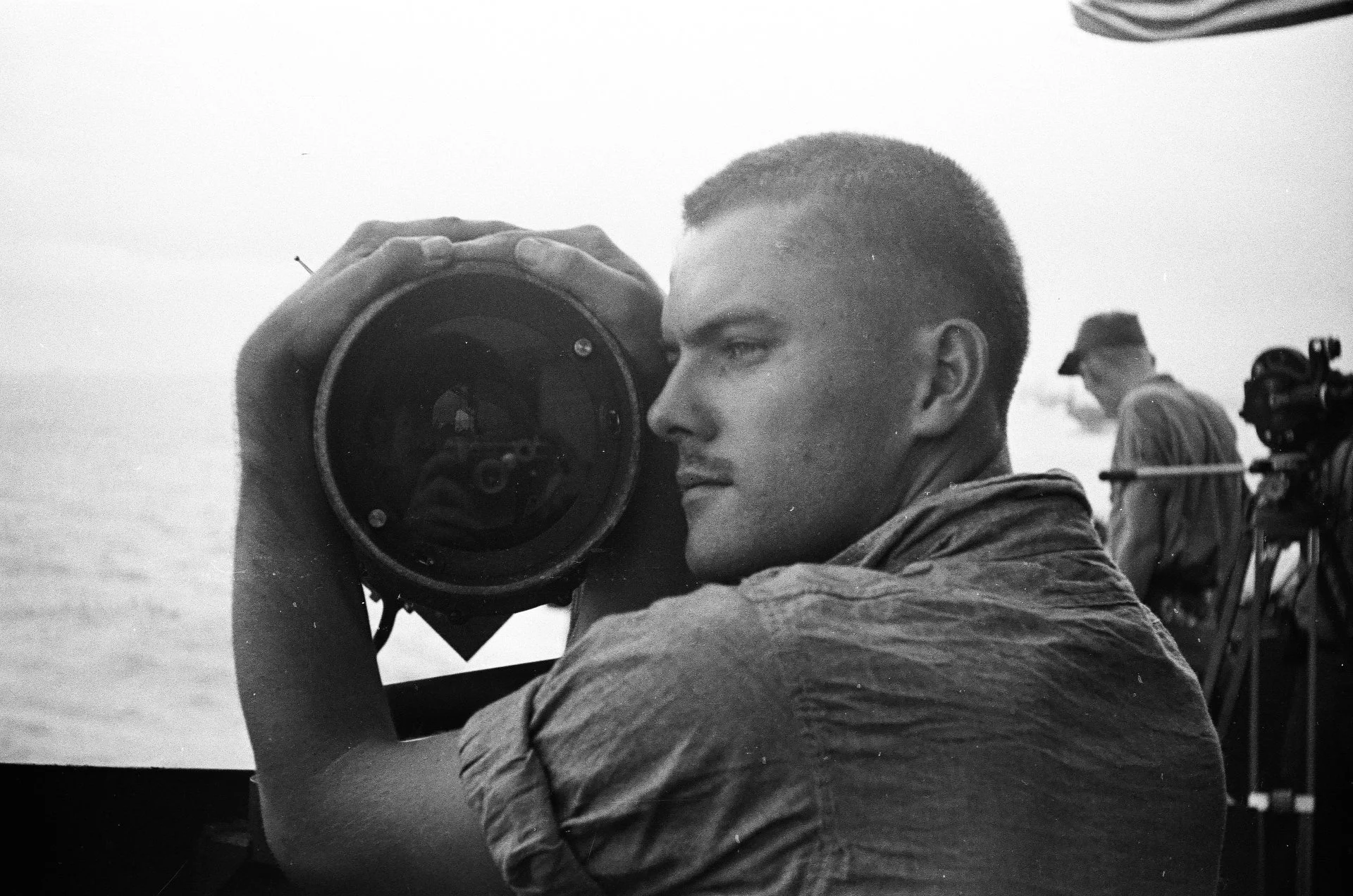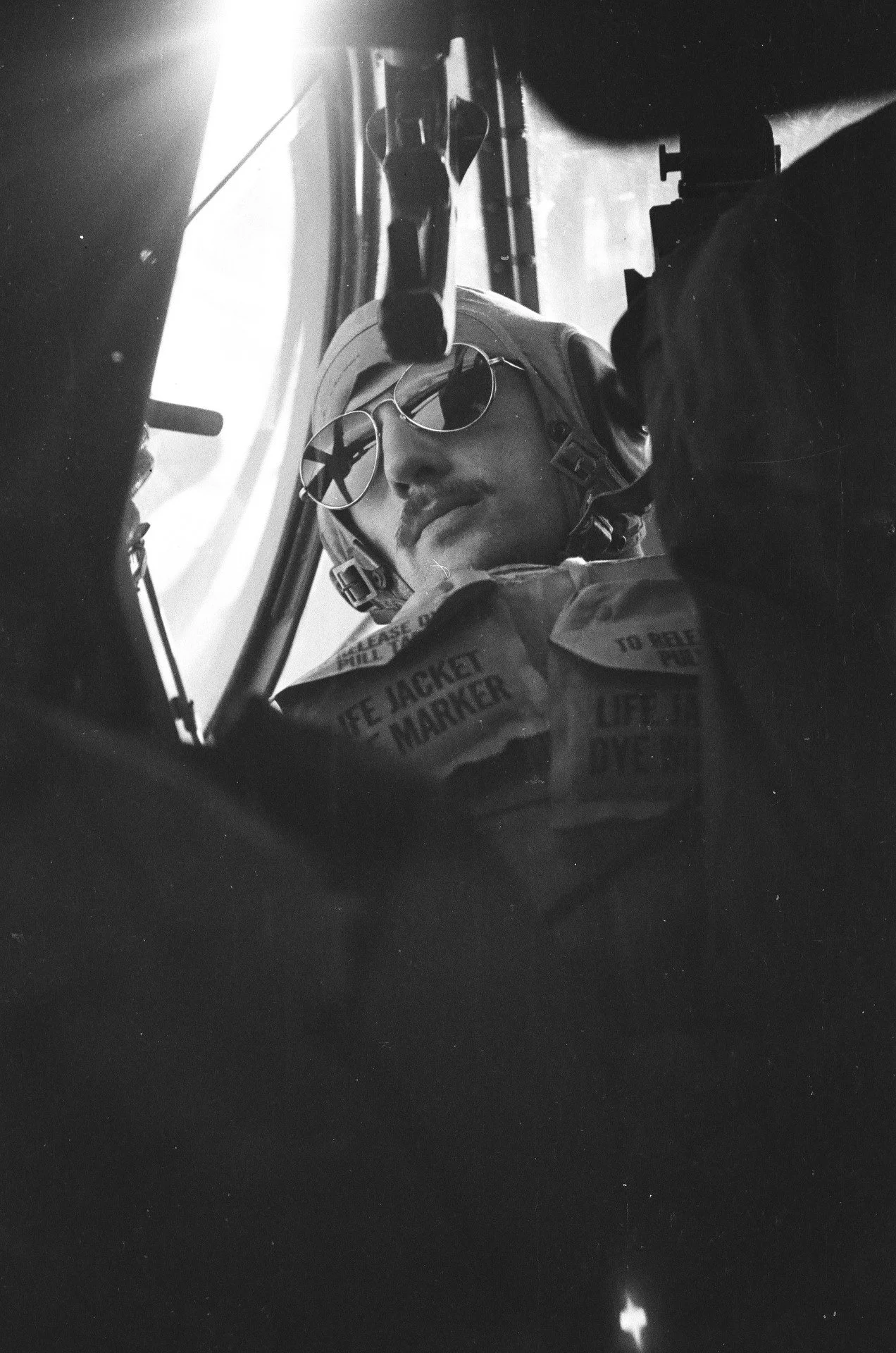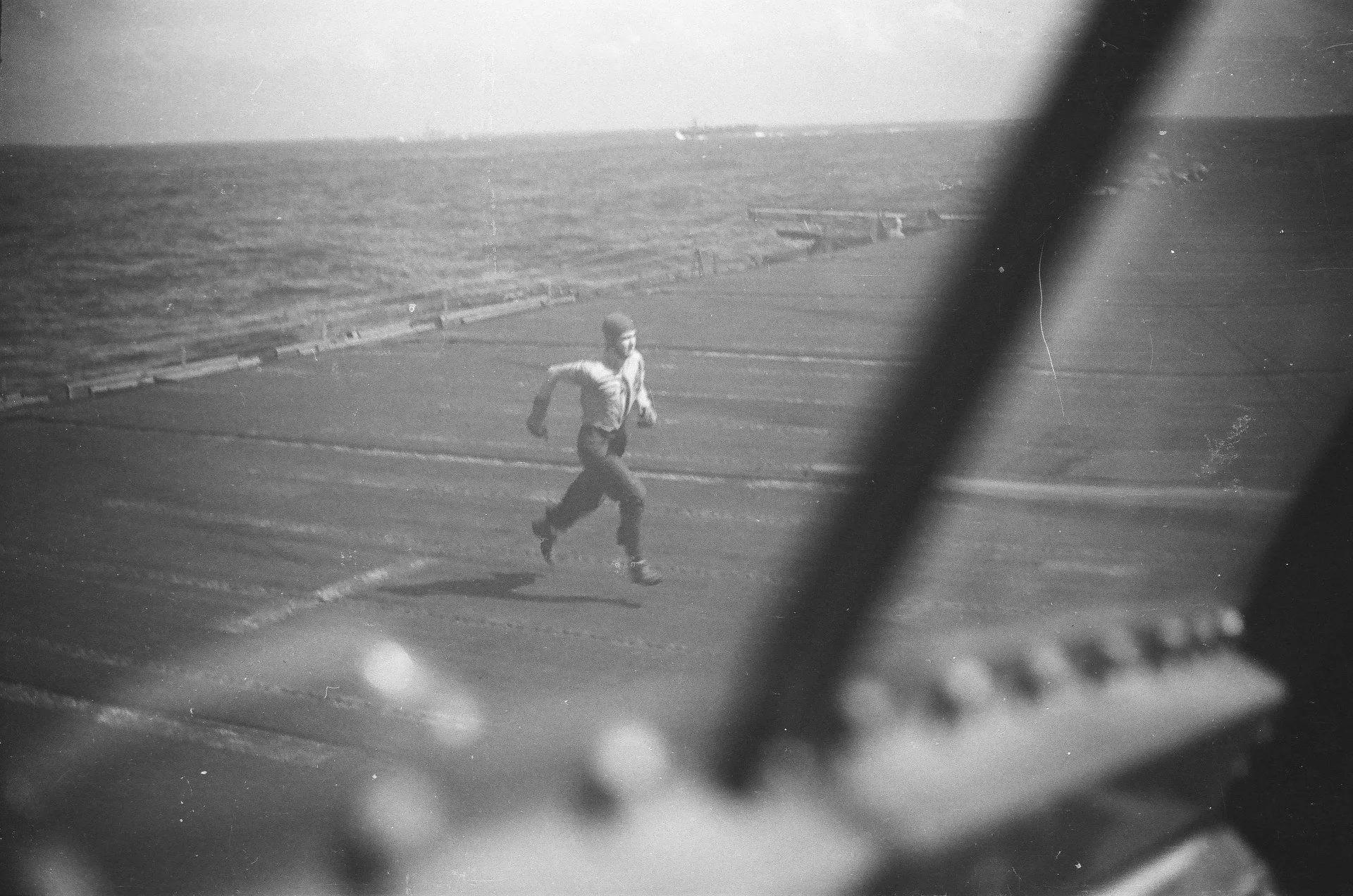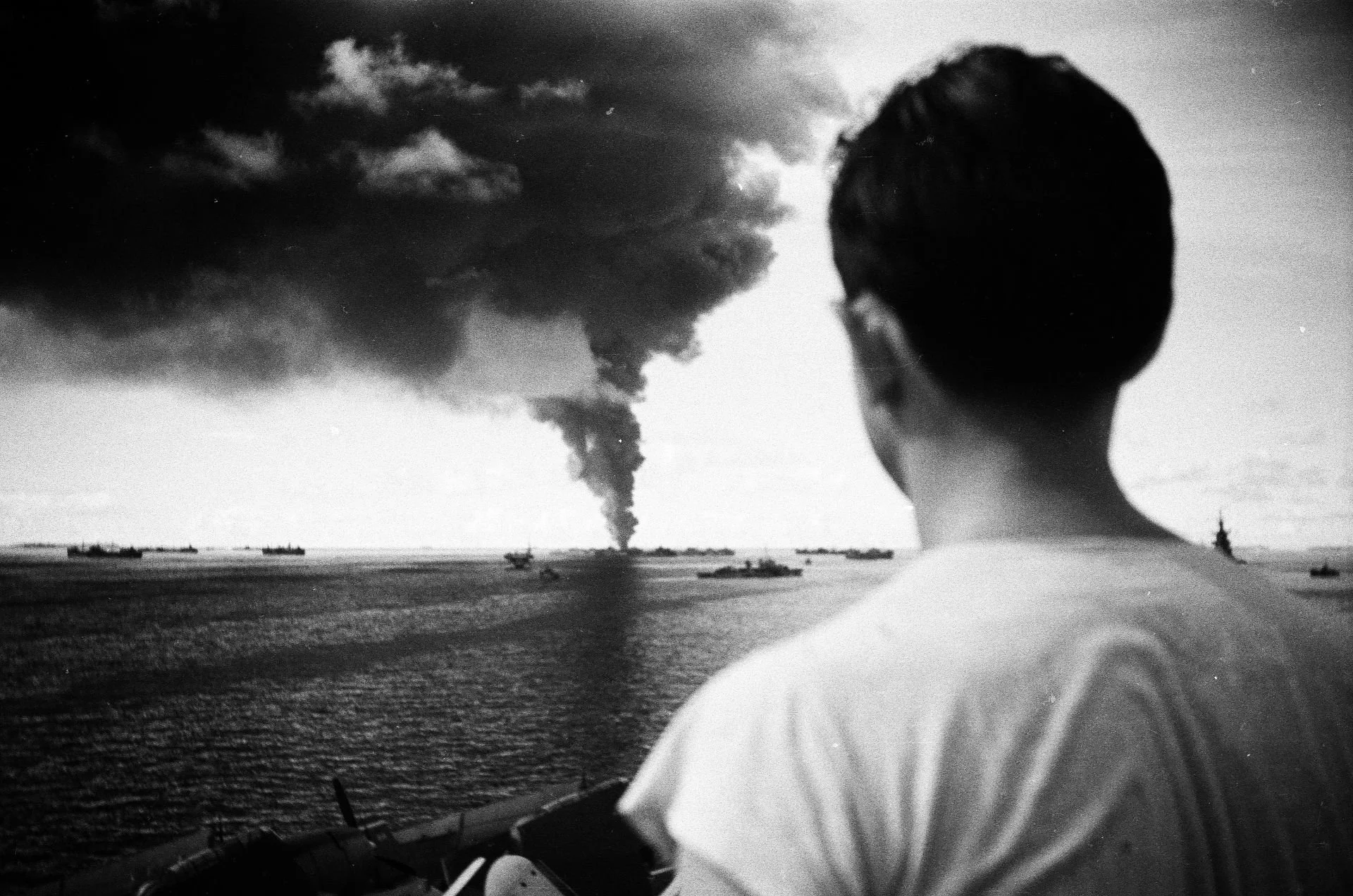Forgotten Frames: A fellow sailor stumbles upon a treasure trove of negatives from World War II
Justin Edelman has entrusted Safelight Labs to develop and process some of his most prized possessions: precious rolls of film from his days as a student and young photographer. But his latest scans weren’t shot on one of the many cameras in his collection. They weren’t even shot in his lifetime.
The photos depict life aboard a Navy vessel in World War II’s Pacific Theater. They’ve offered Edelman a glimpse into a history that both mirrors and diverges from his own.
Edelman found the rolls of negatives in a bin at Camera Exposure in 2019. Kenneth Kahan, the store’s previous owner, had received them, along with a few video reels and photography equipment, from a friend who frequented estate sales. Edelman asked to take them home, knowing the photographer had served in the military.
“It's been sitting in my office for years, but once I started looking at the rolls, I was like, whoa, this is crazy. There's aircraft carriers from World War II in here!” Edelman said.
He did some digging. The photos were shot by Robert Montague, a photographer’s mate in the U.S. Navy. Edelman marveled at this snapshot of history through Montague’s eyes, his use of portholes, plane wings, and doorways to frame his compositions, and his ability to capture the intimate details of life in uniform 80 years ago.
But for Edelman, there was another layer of connection. He served in the Navy for five years, enlisting in 2004, just after high school, to fight in the Iraq War. Looking through these photos, he reflected on his service and Montague’s, noting photos that feel grounded in a much different world, and a much different war than the one he joined. The pictures reminded him just how far developments in aviation, communication technology and military culture have come, down to the details of uniform regulations.
“It's super interesting to look back at those photos and just think of what those guys had to endure,” Edelman said. “When I was in the military, we could send emails, you know? It's not like I had to wait for a letter from a loved one. I got those too, but for them, it was such a different time.”
The difference that looms largest, however, isn’t easily captured on film. Spending time with Montague’s photos provoked Edelman’s renewed reflections on the country’s unification following the September 11, 2001 attacks and during the Second World War.
Inspired by President George W. Bush’s claim that Iraq possessed weapons of mass destruction, Edelman joined the Navy, hoping to defend his country against terrorism just as the Naval soldiers of World War II fought to extinguish the growing flame of fascism. But as the Iraq War continued and its pretenses proved to be false, opposition mounted back home.
Edelman watched a different war take shape in Montague’s photos: “That was a time where I feel like the entire world was sort of unified.”
Still, much of the life depicted in these photos was familiar: soldiers load supplies onto the ship, pulleys transfer sailors from one vessel to another, and the troops pull into port to spend a day onshore in Hawaii. Though we often imagine history as a static list of significant events, Montague’s photos capture candid, warm moments amidst some of the world’s bleakest years, drawing the past into close, vivid focus and revealing its dynamism.
Many of the photos Edelman found were shot by Montague aboard the USS Essex when he was just 25. Montague enlisted in the military in 1943 and served five years, after which he continued shooting film and television as chief of the motion pictures and television division at General Dynamics. After retiring, he volunteered as one of the first docents at the USS Midway Museum.
Montague died in 2015. Beyond his work, some of the photos he left behind offer a glimpse into his personal legacy; shots of his wife, family, and friends introduce even more depth to the story he told with his camera. Edelman was drawn to a candid shot of a couple’s playful moment in a photo booth. This moment of joy, along with his snapshots of military life, may have been lost if not for Edelman’s decision to scan these photos 80 years later.
“It's so cool that something that's over 50 years old could be found in the bin and still give us images,” Edelman said. “Seeing these images really kind of solidifies that I think in the future, film really actually has sort of an important place in preserving our history.”
Film is central to our study of history, but today photos are easier to manipulate than ever. AI has further compromised the reliability of digital images and online information.
Edelman thinks these troubling circumstances make a strong case for film. Seeing Montague’s photos come to life has given him an optimistic outlook on film’s role in photography’s present and future.
“It's given me again a bigger appreciation for film photography because it's an organic compound that can't really be altered,” Edelman said. “Those rolls of film and that technology, as far as enlarging a photo or developing it, that's not going to go anywhere. That is the type of thing that could really stick around for a long time.”


